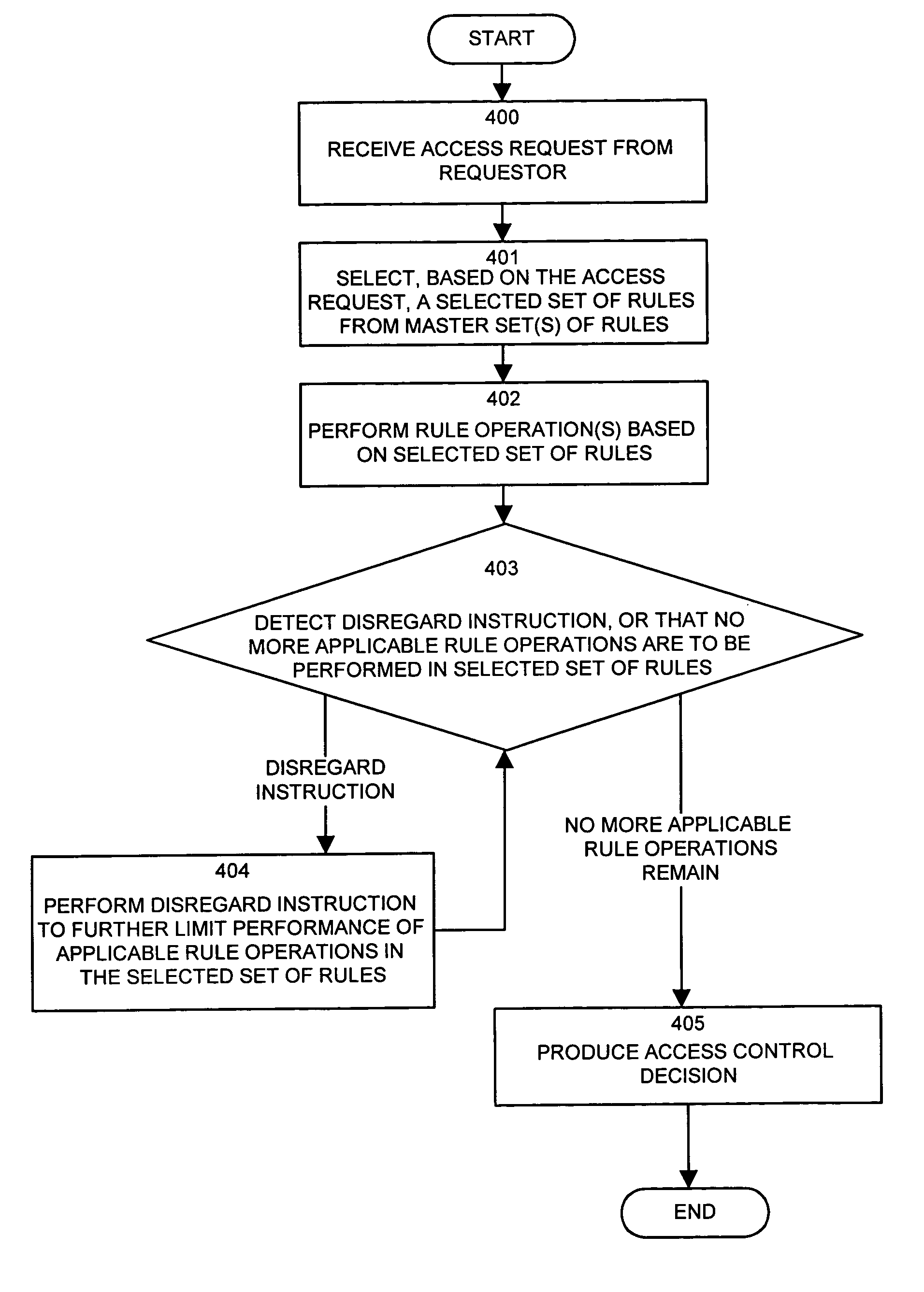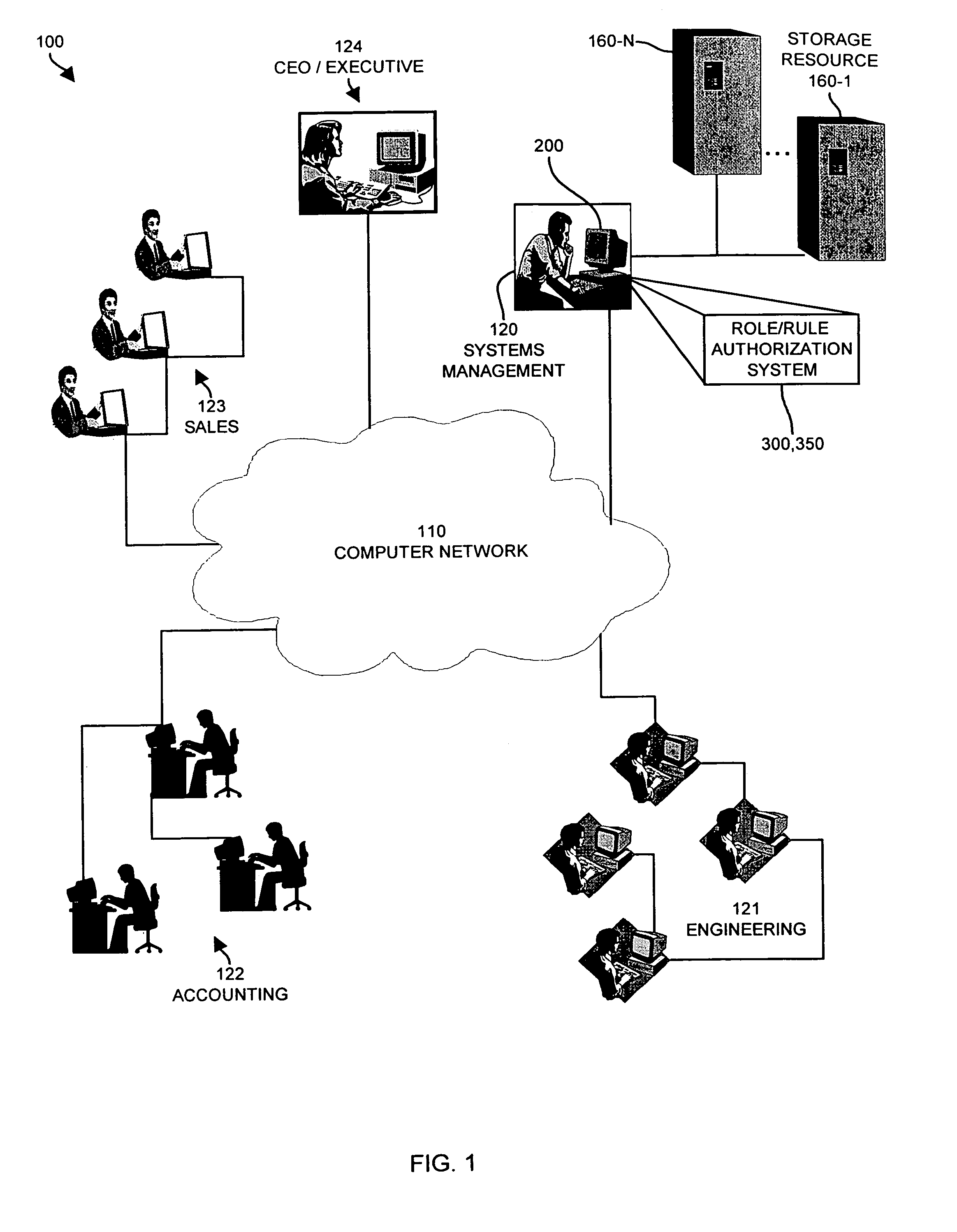Methods and apparatus for controlling access to a resource
a technology of access control and resource, applied in the field of access control systems, can solve problems such as burdensome tasks, incorrect permissions for each file, and user error, and avoid costly mistakes such as accidentally providing incorrect permissions to users
- Summary
- Abstract
- Description
- Claims
- Application Information
AI Technical Summary
Benefits of technology
Problems solved by technology
Method used
Image
Examples
Embodiment Construction
[0045]The present invention relates to unique mechanisms and techniques for providing robust access control to resources in a computing system environment. The authorization system explained herein as the invention is typically embodied as a software module (e.g., plug-in, operating system extension, dynamically linked library (DLL), or separate application) within a computer system configured to provide access control to one or more resources such as elements (e.g. files, volumes, etc.) of data storage.
[0046]Generally (and as will be explained in more detail herein), in operation, a requestor can submit an access request to the system of the invention. Access requests can specify, for example, an identity of a requestor, a type of access requested, and a resource to which this requester requests the access. The system can process this access request against one or more rules selected from a master set of rules which define an access control policy. Instead of processing the access ...
PUM
 Login to View More
Login to View More Abstract
Description
Claims
Application Information
 Login to View More
Login to View More - R&D
- Intellectual Property
- Life Sciences
- Materials
- Tech Scout
- Unparalleled Data Quality
- Higher Quality Content
- 60% Fewer Hallucinations
Browse by: Latest US Patents, China's latest patents, Technical Efficacy Thesaurus, Application Domain, Technology Topic, Popular Technical Reports.
© 2025 PatSnap. All rights reserved.Legal|Privacy policy|Modern Slavery Act Transparency Statement|Sitemap|About US| Contact US: help@patsnap.com



